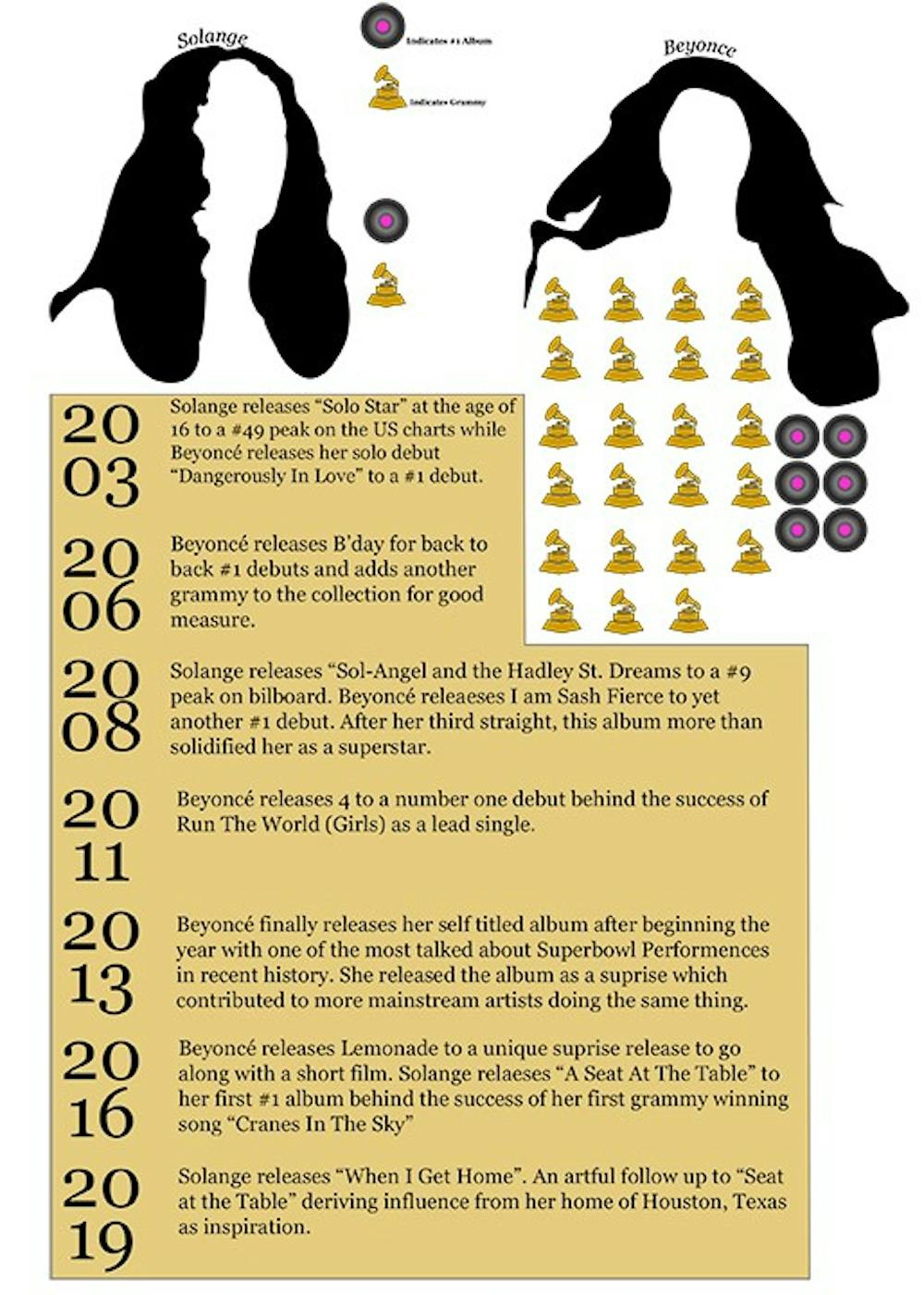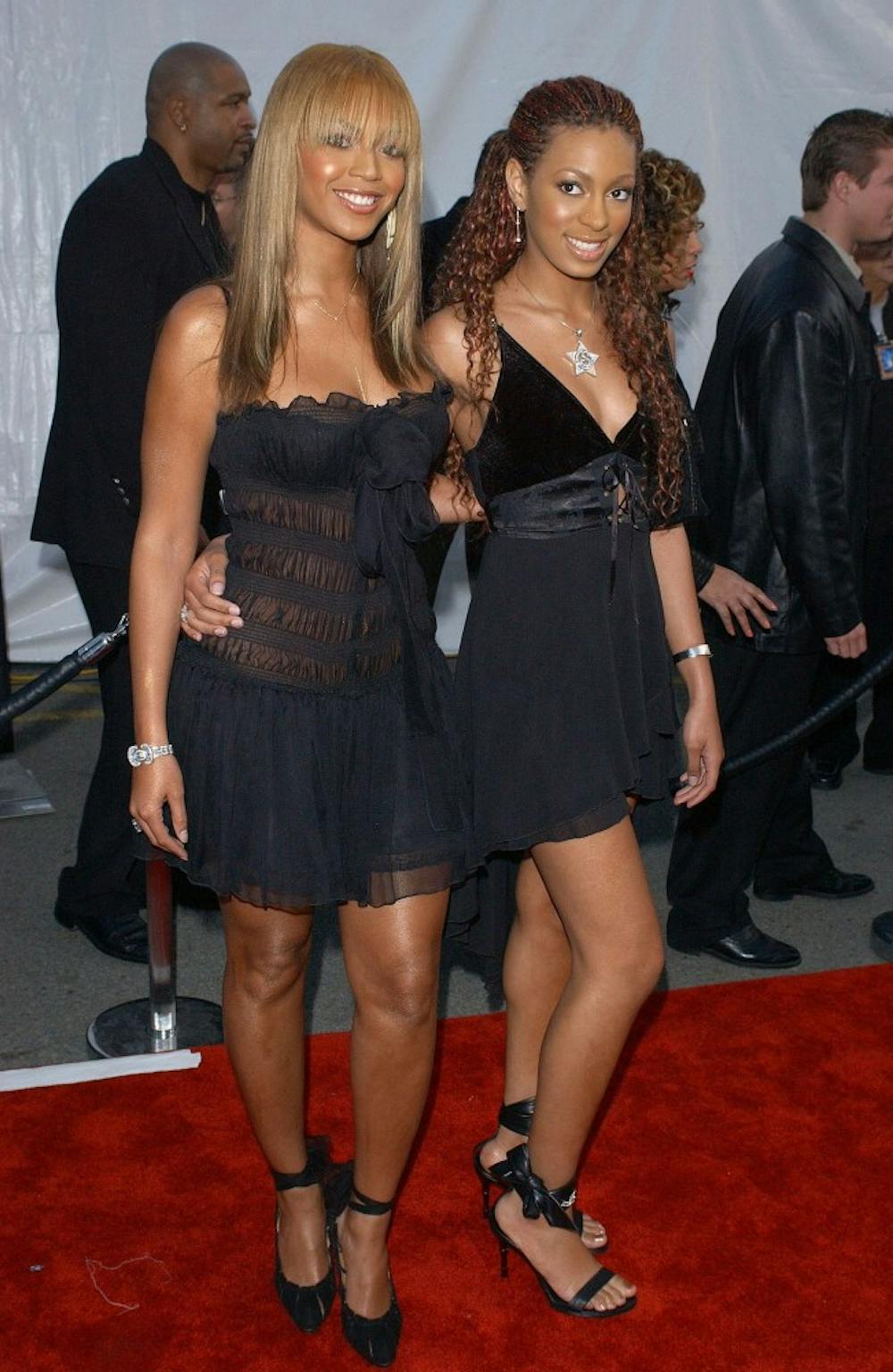
Artists and sisters Solange and Beyoncé have taken vastly different paths to where they are today.
While Beyoncé has been topping charts since the turn of the century (let’s not forget about Destiny’s Child), Solange has been almost nonexistent as a musical counterpart for the better part of her sisters’ meteoric career. Not everyone who knows Solange from her elevator scuffle with Jay-Z also knows her interesting discography.
At 14 years old Solange was working on her debut album, "Solo Star," and she co-produced and co-wrote some of the songs on the record. The sisters had immense talent from the beginning, but took their time to hone their messages and display their artistic ability.
The key details when comparing the two artists are their sonic styles. Beyoncé is a show-stopper, creating spectacle after spectacle in every song, video or stage performance. Solange, on the other hand, has had a very different career path. While Beyoncé was getting number one album after number one album, Solange was still finding herself artistically.
After an eight-year hiatus, Solange released her first number one album with “A Seat at The Table” in 2016. On a record that shines with detail, Solange creates an R&B soundscape that’s almost sedative in its ear-tingling texture. The album showed that Solange was more than Beyoncé's sister. She was her artistic counterpart in the black feminist experience.
Songs like “Cranes in the Sky” and “Don’t Touch My Hair” finally gave Solange fans the alternative R&B interpretation that they’ve been waiting for. As her warm vocals cascade over soft synths and pianos, we get a sense of not only Solange’s message, but its origins.
In “Cranes in the Sky” we hear an ethereal release of pain from Solange — the pain trying to keep heartbreak from stopping you in your tracks. We get a beautifully subdued message that tells women that no matter how they deal with heartbreak, they can move past the isolation.
The duality of the central themes come together with the emotional core of the album in “Don’t Touch My Hair,” a song that tackles something tied deeply to her identity: her hair. She begins the song by saying, “don’t touch my hair, when it’s the feelings I wear," and lays a foundation for why something simple like hair can have such a key role in influencing daily interactions. These themes send a message that’s just as powerful as her sister's.
Both sonically and socially, Beyoncé occupies an entirely different sphere than Solange. While Solange appears in Calvin Klein ads with indie R&B darlings like Blood Orange & Kelela, Beyoncé is out here throwing haymakers at the charts. After six consecutive number one albums it may feel unfair to discuss the two in the same article.
But music is never about the numbers.
The rare generational pop star that creates a spectacle no matter what she does, Beyoncé has sends her message from the world's biggest stages. In 2014 with the word “FEMINIST” in all caps behind her at the VMA’s, Beyoncé made it very clear that she was not going to remain a silent force in empowering women around the world. In 2016 Beyoncé gave homage to the Black Panthers, a civil rights activist group from the 1960s, and she again spoke up for the marginalized.
The difference in how Beyoncé and Solange deliver their messages is the split in how people interpret their art. Beyoncé sends hers with a sonic boom loud enough for everyone to hear while Solange works the silent engine that went fast enough to create such a sound. Solange furthers this theme on her latest record “When I Get Home."
On another album, Solange delivers her poignant message in a different format. With nearly droning repetition, she hypnotizes us with phrases that occupy almost the entire song while she changes not what she says, but how she says it. The rubber bass grooves along, establishing the scene for the central themes of “When I Get Home." While “Seat at the Table” dives deep into her black identity lyrically, “When I Get Home” is different.
"With 'A Seat at the Table,' I had so much to say," Solange said in an interview with Complex. "With this album, I had so much to feel.”
Although the comparisons sonically seem fruitless, we can still discuss how they use their different social spheres and artistic influence to send a message. To always have an answer for your art is important, and these sisters show that there’s more than one right answer.
It's also apparent that Solange was more concerned with creating a soundscape reflective of her experience as a young woman in Houston. After starting the writing portion of the album in Houston’s Third Ward, Solange moved back home and ultimately created an album rich in Texas flavor.
Like her sister, Beyoncé derives a lot of her artistic influence from her home. Beyoncé has expanded so far beyond her home with her outreach that she's had to take on influence from different sonic spheres than most artists, but despite this global outreach, Beyoncé still solidifies her representations of her Houston home in her lyrics.
No matter how they deliver their message, Beyoncé and Solange will always have the same roots.

